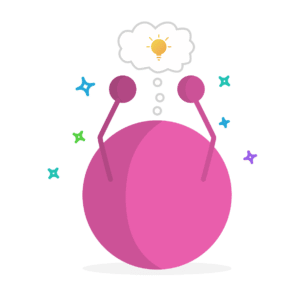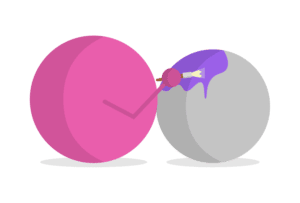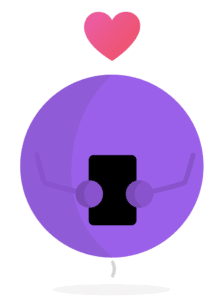Design Sprint
What is a design sprint?
A design sprint is a unique event where teams test out their ideas by creating working models and then presenting them to real users. The goal of the Sprint is to develop an MVP that can be tested in real life. Design sprint sessions are short bursts of intensive activity that allow teams to tackle complex problems quickly and effectively. They’re based on the same approach used by NASA to design and develop spacecraft, NASA calls it “rapid prototyping.”
The design sprint was created by Jake Knapp and his team at Google Ventures, and it is now a wildly popular tool, bringing together multi-disciplinary teams to quickly explore avenues for unlocking new functionality and revenues.

How long is a design sprint?
Design sprints are usually five days long, but in some cases, they can be longer. The first day is for the team to get to know each other and map out the customer journey and pinpoint the problems or opportunities they can solve in this sprint. The second day is when the team sketches out all the possible solutions. The third day is when the team decides what they are going to build for their MVP. On the fourth day, the team builds the prototype. Finally, the fifth day is when the team tests the clickable prototype with customers and when the team finds out if the prototype is a success or a failure.
What is the difference between a scrum agile sprint and a design sprint?
Agile sprints for software engineering typically involve a planning phase, a two-week sprint during which developers implement features, a post-sprint review, and then the start of another sprint. After that, they get started on the next sprint. Sprint cycles are made up of various tasks, which include bugs, user stories, and epics, and have multiple developers assigned to them.
A design sprint is a five-day event where designers, developers, product managers, UX specialists, etc., come together to create an MVP for a new idea. They start out by building a minimal viable product (MVP) that they test with real users at the end of five days. After evaluating their MVP, the entire development group gathers together to discuss whether they think the MVP works well enough for them to continue developing it further.
The value of a design sprint means that within 5 days you are testing your hypothesis/solution with real customers rather than working for months or years on a project before a customer ever gets to interact with it. This speed-to-market model can prove invaluable
Why is a design sprint important?
Classically product decisions are made by committees, over the course of many meetings. Committees tend to be slow and inefficient at producing decisions and they often produce too many options for stakeholders to choose from.
Design sprints encourage teams to collaborate by creating something together. They’re an excellent way of involving different stakeholders, including customers, developers, product managers, customer service reps, and senior management – helping them work towards a shared goal.
During a design sprint, the group will work rapidly through the entire sprint period to a create prototype that addresses business issues, then test them quickly to assess their effectiveness.
What is the process for a design sprint?
You will spend five days working together in a war room with a group of five to seven people who will help you solve a critical business issue. By the end of the 5 days, you will have a functioning prototype that solves the problem you set out to solve at the start of the project and your hypothesis will be validated with real customer feedback.
Who should be involved in the sprint?
A good team size for a sprint is four to seven people. They include the facilitator, the design lead, a person who makes decisions (usually the CEO if the company is small), the PM, an engineer, and someone from the company’s core business department(s).
The design sprint is broken up into 5 days/phases:
1. Monday: map
Monday is when you kick off the design sprint. You discuss and decide what is the long-term goal, you map the challenge and you ask your experts to knowledge share and finally pick a target. You find a meaty but manageable piece of the problem that you can build a solution for by the end of the week.
Key things to do on Monday
- Introduce the team
- Explain what a design sprint is and what the process and expectations are for the design sprint
- Set a long-term goal
- Ask structured questions – what does success look like? what does failure look like? What problem are you trying to solve?
- Make a map – on one side of your whiteboard you have your product on the other your customers, creating a simple customer journey map with 5-15 simple steps helps you visualize your customer’s experience with your product
- Interview experts – short interviews with members of the sprint team but also any external team members or customers who can’t be included in the entire sprint for various possible reasons. Make sure to update the goal, questions, and map as you go
- Get out the post-its – this is where you take the problems and you think about them as opportunities, write one idea per post-it. Then you group those notes into themes, then vote on which ideas are the best
- Set your target – put the winning ideas on the map, and let your decider make the final call on what you will do in this design sprint
2. Tuesday – sketch
The team spends Tuesday exploring all the possible solutions to the problem/opportunity discovered on Monday. The Team will look at various sources for inspiration and by the end of the day will have a sketch of what you are going to put in front of your user testing group on Friday.
Key things to do on Tuesday
- Research – look at ways to solve the problem, other companies, and your product. Collect ideas along the way
- Set the parameters for the sketch – are you all going to draw the entire map storyboard or are you going to break it up between you? Depending on the complexity of the problem you’re solving in the design sprint this should be quite obvious to you
- Sketch – from ideation to solution sketches, create compelling stories to solve the problem
- Recruit user-test participants for Friday
3. Wednesday – decide
Wednesday is when you decide what solution storyboard you are going to take through to prototype and test. You will use today to evaluate everything you sketched yesterday against the highest chance of success in reaching your long-term goal. Then piece all the most valuable scenes together to make a storyboard for your prototype.
Use the “Sticky decision” five ways to pick the best.
- Sketch gallery – put all the sketches up on the wall
- Heat map – stick between 1-3 dot stickers next to every part of every solution you like
- Speed review – 3 minutes to talk about each sketch, this makes sure you all know exactly what the sketcher was trying to do, and you know the entire team understands its value
- Straw poll – secret voting for which idea is best
- Supervote – the decider gets the final say – make sure they understand that their choices will be what gets prototyped
Key things to do on Wednesday
- Go through the five stages of sticky decision-making
- Collate – bring all the supervote-winning sketches together
- Decide – can all the sketches become one product or feature? Or do you need to vote again for which ideas will get in the finished product?
- Storyboard your potential solutions into a realistic prototype

4. Thursday – build
Now you’re on day four of this five-day process, you’ve got everything you need to begin the “development process”, by the end of the day you don’t need a high-fidelity prototype but you do need at least a clickable prototype. The way to achieve this is to rely on the skills of your multidisciplinary teams – within your sprint team, you will have all the skills you need to divide and conquer and make your prototype to put in front of your user testers on Friday.
Key things to do on Thursday
- Use the right tools – make sure you have tools that help you work quickly
- Roles and responsibilities – spilt tasks amongst each sprint member – but make sure you have someone stitching it all together
- Test it – Make sure that your interviewer and the decider get to use it.
- Write the interview script
5. Friday – test
Today is the most important day within the design sprint because it’s when your customer and user feedback will tell you if you have answered that critical business question. By looking at the user experience, with potential users, you are able to see if you have answered those key questions you asked on Monday and if you have built a prototype that supports your business goals.
Key things to do on Friday
- Preparation – make sure you have your interview room set up, cameras, and your prototype ready for your user testing to begin
- Interview – at least 5 people, John Zeratsky believes that’s when the patterns will start to show in their user behavior
- Learn – In another room your sprint team will be watching and collecting knowledge from watching those initial user validation moments

For a checklist for the Friday interview, there is this helpful video by Michael Margolis.
How to finish a design sprint
Review your sprint against your long-term goal, and look at the themes and the patterns your team noticed during your user testing. This is where you decide if the prototype is successful and if it is something to pursue. Remember to present your work to the wider team; will show the validity of the work, as well as show the importance of design thinking when it comes to answering big questions in the future.
Further resources for design sprints:
- The inventors of the design sprint (GV) Google Ventures.
- Sprint: How to Solve Big Problems and Test New Ideas in Just Five Days by Jake Knapp with John Zeratsky and Braden Kowitz.